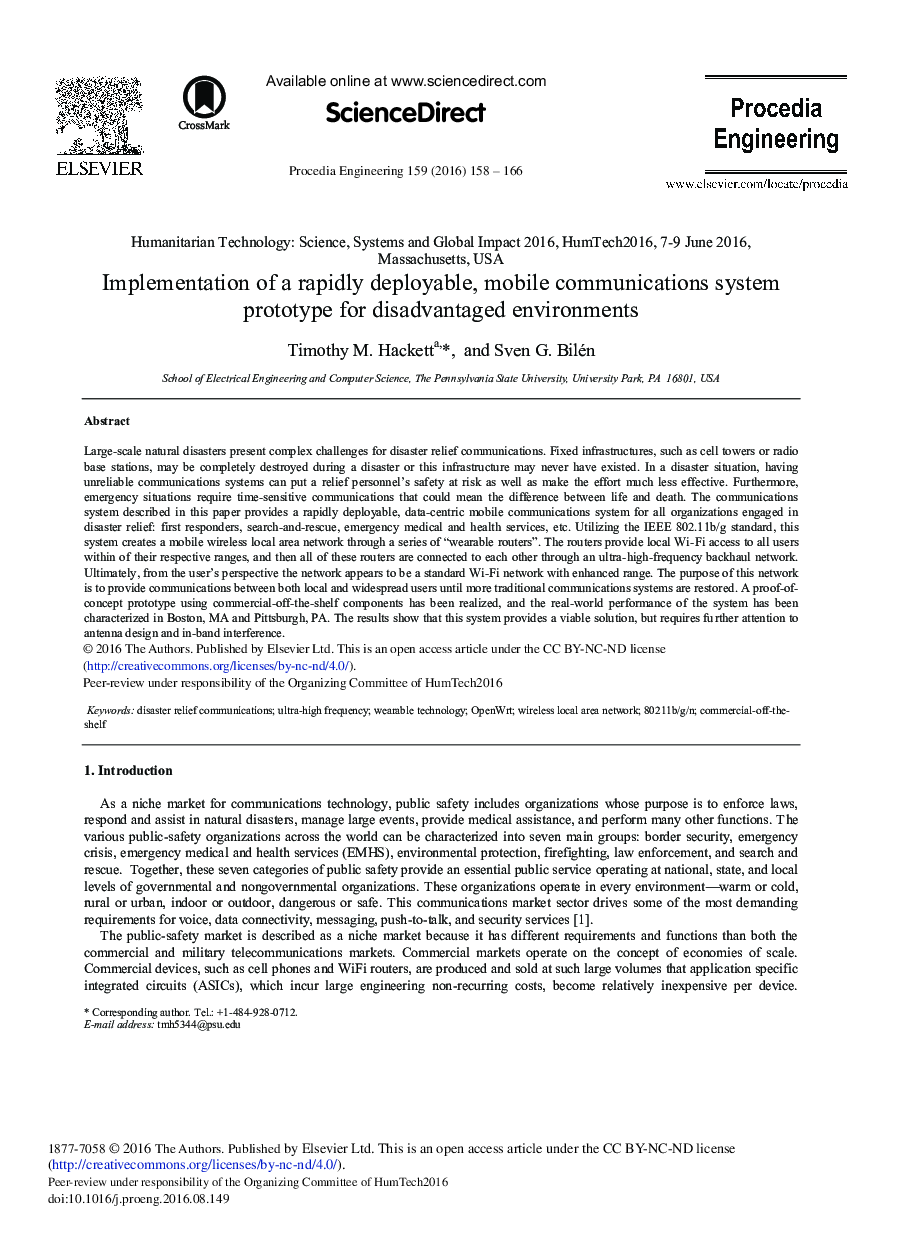| Article ID | Journal | Published Year | Pages | File Type |
|---|---|---|---|---|
| 5030091 | Procedia Engineering | 2016 | 9 Pages |
Large-scale natural disasters present complex challenges for disaster relief communications. Fixed infrastructures, such as cell towers or radio base stations, may be completely destroyed during a disaster or this infrastructure may never have existed. In a disaster situation, having unreliable communications systems can put a relief personnel's safety at risk as well as make the effort much less effective. Furthermore, emergency situations require time-sensitive communications that could mean the difference between life and death. The communications system described in this paper provides a rapidly deployable, data-centric mobile communications system for all organizations engaged in disaster relief: first responders, search-and-rescue, emergency medical and health services, etc. Utilizing the IEEE 802.11b/g standard, this system creates a mobile wireless local area network through a series of “wearable routers”. The routers provide local Wi-Fi access to all users within of their respective ranges, and then all of these routers are connected to each other through an ultra-high-frequency backhaul network. Ultimately, from the user's perspective the network appears to be a standard Wi-Fi network with enhanced range. The purpose of this network is to provide communications between both local and widespread users until more traditional communications systems are restored. A proof-of-concept prototype using commercial-off-the-shelf components has been realized, and the real-world performance of the system has been characterized in Boston, MA and Pittsburgh, PA. The results show that this system provides a viable solution, but requires further attention to antenna design and in-band interference.
